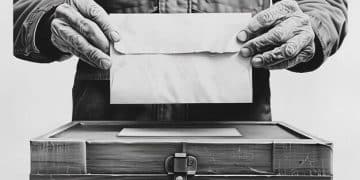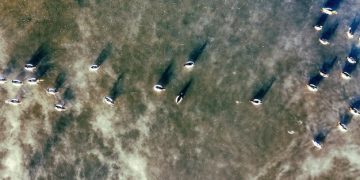The Battle of Britain: How Radar Defeated the Luftwaffe
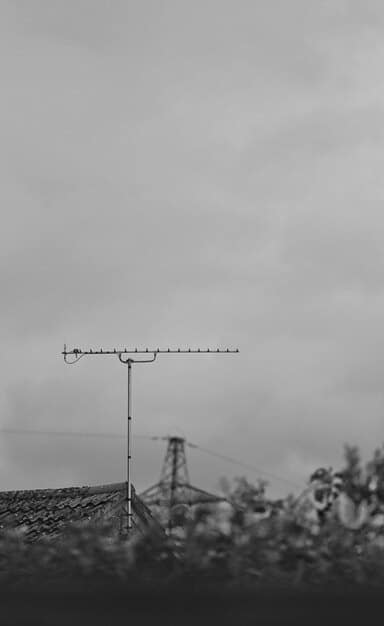
The Battle of Britain saw the innovative use of radar technology by the Royal Air Force (RAF) as a crucial element in detecting and intercepting Luftwaffe attacks, ultimately contributing to Britain’s successful defense against German air superiority.
The **Battle of Britain: Analyzing the Role of Radar in Defending Against the Luftwaffe** reveals how a new technology changed the course of the war, allowing a small island nation to defy the might of Nazi Germany.
The Dawn of Air Warfare and a Nation’s Vulnerability
The Battle of Britain, fought in the skies over England in the summer and autumn of 1940, was a pivotal moment in World War II. Britain stood alone against Nazi Germany, and the Luftwaffe, the German air force, aimed to cripple the Royal Air Force (RAF) and pave the way for a potential invasion.
The Threat from Above
Germany’s rapid conquest of Europe had demonstrated the devastating power of air warfare. Britain, an island nation, was particularly vulnerable to aerial attack, and the Luftwaffe prepared to exploit that vulnerability.
In this context, early detection of enemy aircraft was paramount. Traditional methods of visual and acoustic detection were simply inadequate to provide sufficient warning, given the speed of modern aircraft. Britain needed a technological edge to counter the Luftwaffe’s numerical superiority. That edge came in the form of radar.
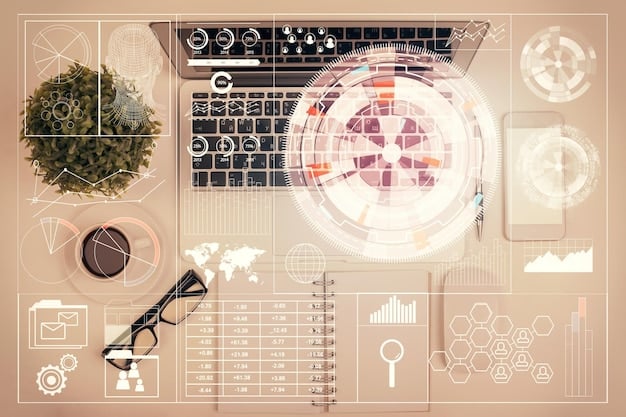
The Chain Home System
The Chain Home system, a network of radar stations along the British coastline, provided early warning of approaching German aircraft. These stations could detect enemy formations at a range of up to 100 miles, giving the RAF vital time to scramble fighters and intercept the attackers.
- Early warning of Luftwaffe attacks.
- Enabled efficient deployment of RAF fighters.
- Significantly reduced RAF losses.
The Chain Home system was not perfect; it had limitations in terms of altitude coverage and accuracy. However, it provided a crucial advantage, allowing the RAF to conserve its resources and engage the enemy at strategically advantageous moments.
The early days of World War II saw Britain facing a powerful and ruthless enemy. Radar offered a technological advantage that proved critical for the air defense of Britain.
The Evolution of Radar Technology
The radar technology that defended Britain during the Battle of Britain was not developed overnight. It was the result of years of research and experimentation driven by a growing awareness of the increasing threat of air warfare.
Early Radar Research
Pioneering work in the 1930s by British scientists like Sir Robert Watson-Watt led to the development of practical radar systems. These early systems used radio waves to detect the presence and location of distant objects.
Key to early radar development was the understanding of radio wave propagation and reflection, coupled with innovations in electronics and signal processing. Researchers toiled to increase the range and accuracy of their nascent systems, all while the clouds of war gathered over Europe.
From Theory to Reality
Initial experiments showed promise, but the technology had to be refined to meet the demands of military application. This involved developing robust equipment that could operate reliably under challenging conditions and training personnel to interpret the complex data produced by the radar systems.
- Development of pulse radar techniques.
- Improvement of antenna designs.
- Integration of radar data with air defense systems.
The evolution of radar technology was a rapid process, driven by the urgency of the looming conflict. Thanks to the foresight and dedication of British scientists and engineers, Britain was well-prepared to utilize radar to defend its skies by 1940.
Radar’s development was a testament to human ingenuity in the face of adversity.
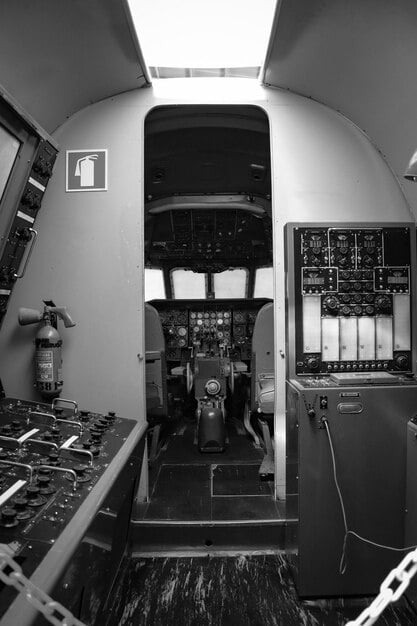
The Operational Implementation of Radar
The Chain Home radar system was not merely a technological marvel; it was a complex and integrated system that required skilled personnel and efficient communication networks to function effectively.
Integration with Air Defense
Information from the radar stations was fed into a central control room, where it was analyzed and used to direct RAF fighters to intercept enemy aircraft. This integration of radar data with air defense systems was crucial to the success of Britain’s air defense.
The coordination between radar operators, plotters, and fighter controllers was seamless. As new data was received, controllers would update the positions of incoming enemy aircraft and vector fighters to intercept.
The Human Element
The success of the Chain Home system depended on the dedication and skill of the men and women who operated it. These individuals worked tirelessly under immense pressure to provide timely and accurate information to the RAF.
- Specialized training for radar operators.
- Establishment of efficient communication protocols.
- Cooperation between radar stations and fighter command.
The Chain Home system was not a completely automated system, and the human element was of utmost importance. The ability of operators to quickly interpret data and react appropriately made the difference between success and failure.
Without well-trained personnel and integrated operational structures, radar would have been of limited value.
Impact on RAF Strategy and Tactics
Radar significantly altered the RAF’s strategic and tactical options during the Battle of Britain. It allowed the RAF to employ its limited resources more efficiently and to concentrate its forces where they were most needed.
Efficient Resource Allocation
Instead of maintaining constant patrols, the RAF could now scramble fighters only when enemy aircraft were detected, saving valuable fuel and reducing wear and tear on aircraft and crews. This allowed the RAF to maintain a higher level of readiness for longer.
The ability to vector fighters towards the enemy also reduced the time it took for interceptions to occur, increasing the chances of successful engagements. The RAF was able to maintain constant pressure on the Luftwaffe.
Adapting to the Technology
The RAF had to adapt its tactics to take full advantage of the information provided by radar. This involved developing new interception techniques and training pilots to work closely with radar controllers. Fighter pilots were directed to intercept Luftwaffe formations using radar data.
- Improved interception rates.
- Reduced pilot fatigue.
- Greater operational flexibility.
The impact of radar on the RAF’s tactics was profound and wide-ranging. Radar allowed the RAF to overcome its numerical disadvantage and fight the Luftwaffe on more equal terms.
Radar was a strategic game-changer. The integration of radar into the operational framework of the RAF was transformative.
Challenges and Limitations of Early Radar
While radar played a crucial role in the Battle of Britain, it was not a perfect technology. Early radar systems had limitations that the Luftwaffe attempted to exploit. It is important to acknowledge these shortcomings to understand the full context of radar’s impact.
Technological Imperfections
Early radar systems were susceptible to interference and jamming. The Luftwaffe developed countermeasures to disrupt the radar signals, making it difficult for the British to accurately track incoming aircraft. Altitude coverage was also limited, making very low-flying aircraft difficult to detect.
Radar operators had to learn to filter out spurious signals and cope with the inaccuracies inherent in the technology. While the system worked, there were many opportunities for it to fail. The Luftwaffe was focused on exploiting potential weak points.
Countermeasures and Adaptation
The Luftwaffe attempted to exploit the limitations of the Chain Home system by flying at low altitudes or using jamming techniques. However, the British quickly adapted, developing new radar technologies and tactics to counter these threats. New antennas and signal processing techniques helped overcome jamming. The creation of mobile radar units enabled the RAF to fill gaps in coverage.
- Jamming of radar signals.
- Low-altitude attacks.
- Technological obsolescence
Ultimately, the British were able to overcome the limitations of early radar and maintain their technological advantage throughout the Battle of Britain. Adaptation and innovation were critical to maintaining air superiority.
Despite its limitations, radar proved to be an invaluable asset. It was the best technology available at the time.
Radar’s Legacy
The Battle of Britain demonstrated the potential of radar as a game-changing military technology. Its success in defending Britain against the Luftwaffe spurred further development and refinement of radar technology throughout the war. The development of radar proved that technology could be used to level the playing field.
Wartime Advancements
Radar technology evolved rapidly during World War II, with new types of radar systems being developed for use in aircraft, ships, and submarines. These advancements significantly enhanced the capabilities of Allied forces and contributed to their ultimate victory. Lighter, more efficient radar could be deployed to aircraft, providing an early warning of incoming enemy fighters.
Once airborne radar was perfected, the Allies had the option to hunt down enemy vessels at night.
Post-War Applications
After the war, radar technology was adapted for a wide range of civilian applications, including air traffic control, weather forecasting, and maritime navigation. Radar is useful for detecting all sorts of objects, large and small. Applications range from tracking airplanes to seeing what is in the night sky.
- Air traffic control systems.
- Weather forecasting models.
- Maritime navigation equipment.
The legacy of radar extends far beyond the battlefield. It has become an indispensable tool in modern life, contributing to safety, efficiency, and security in countless ways.
Radar represents an important chapter in the history of technology, and it continues to shape the world we live in today. Radar has become an integral part of how the world operates.
| Key Point | Brief Description |
|---|---|
| 📡 Early Radar Development | British scientists pioneered radar technology in the 1930s, leading to the Chain Home system. |
| ⚠️ Operational Challenges | Early radar faced limitations like jamming and low-altitude detection, which were continuously addressed. |
| 🛡️ RAF Strategy | Radar enabled the RAF to efficiently allocate resources and adapt tactics, improving interception rates. |
| ✈️ Post-War Use | Radar technology was adapted for civilian uses such as air traffic control and weather forecasting. |
FAQ
▼
The Chain Home was a network of radar stations built along the British coastline before World War II to detect incoming enemy aircraft, particularly from Germany.
▼
Radar provided early warning of Luftwaffe attacks, allowing the RAF to scramble fighters in a timely manner, conserve resources, and intercept enemy formations effectively.
▼
Early radar systems had limitations in terms of altitude coverage, accuracy, and susceptibility to jamming. The Luftwaffe tried to exploit these flaws through low-altitude attacks.
▼
Radar technology underwent rapid development, with advancements in radar systems for aircraft, ships, and submarines, boosting Allied military capabilities significantly.
▼
Today, radar is used in various civilian sectors like air traffic control, weather forecasting, and maritime navigation, helping to improve safety, efficiency, and security across industries.
Conclusion
The Battle of Britain stands as a testament to the power of technological innovation in warfare. The innovative application of radar by the Royal Air Force provided it with a crucial degree of air superiority. Radar technology enabled the RAF to use resources wisely, making a major difference in the war.
